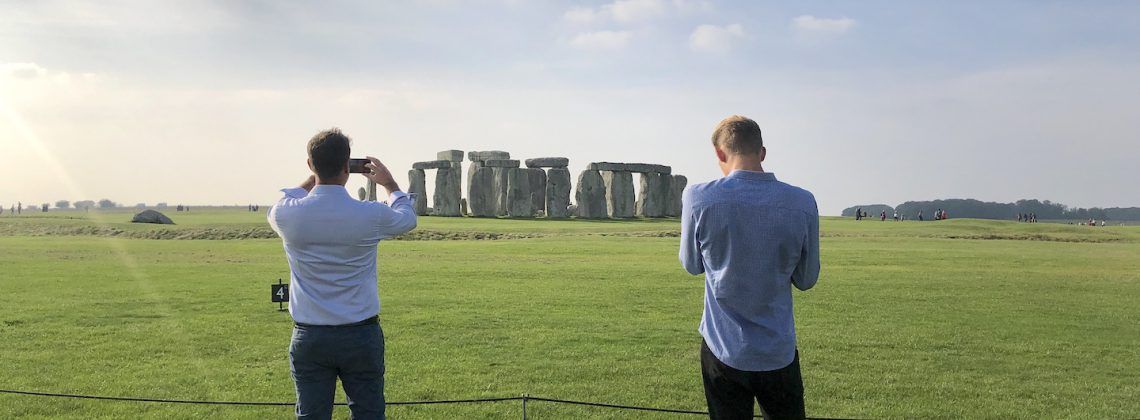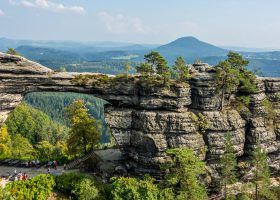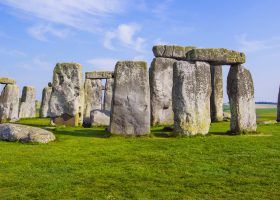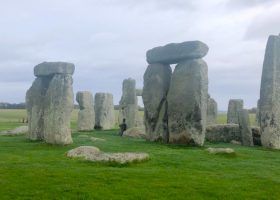Stonehenge is a random yet intricately placed set of 93 stones that have captivated the attention of scientists, historians, and tourists for decades. Why were they placed there? Who did it? How did they do it? What was it for? The history of Stonehenge is as mysterious as the rocks, but we’ll try to explain what historians and scientists have discovered about these ancient ruins.
Pro Tips:
- Bookmark this post so you can easily find it later.
- Visit our Guide to Stonehenge for a great trip.
- Check out our Stonehenge tours.
- Find out if a Stonehenge tour is worth it.
What Is Stonehenge?
You might be thinking, “What is so cool about a bunch of rocks?” But Stonehenge is so much more than just rocks, it’s a site full of mysterious stories and unanswered questions. Why were the rocks placed here, who did it and how? No one knows… But there have been tons of people who have spent their lives speculating. So, we’re here to share all the facts, theories and history behind Stonehenge.
Stonehenge is a mysterious arrangement of 93 stones, famous for its unique post-and-lintel design, where massive sandstone blocks are supported by two stones held together with mortise and tenon joints—kind of like an ancient woodworking trick. While not the largest or best-preserved stone circle in Britain, Stonehenge has always captivated the most attention and imagination.
Built in phases, the site began as a henge—a circle of ditches—around 3000–2000 B.C. Around 1,000 years later, bluestones were brought from Wales, though how they were transported remains unclear. Eventually, these were replaced with towering sarsens hauled 15 miles from Durrington Walls, arranged with a complex joint system to create the iconic monument we see today.
Okay, now that we’re all on the same page about what Stonehenge actually is, it’s time for some fun facts, legends, secrets and more.
- Stonehenge Facts to Share at Parties
- Mysterious Stonehenge Legends
- Stonehenge Secrets Revealed
- Interesting Stonehenge OriginTheories
- Why We Love Stonehenge
- The Best Stonehenge Tours
Stonehenge Facts to Share at Parties
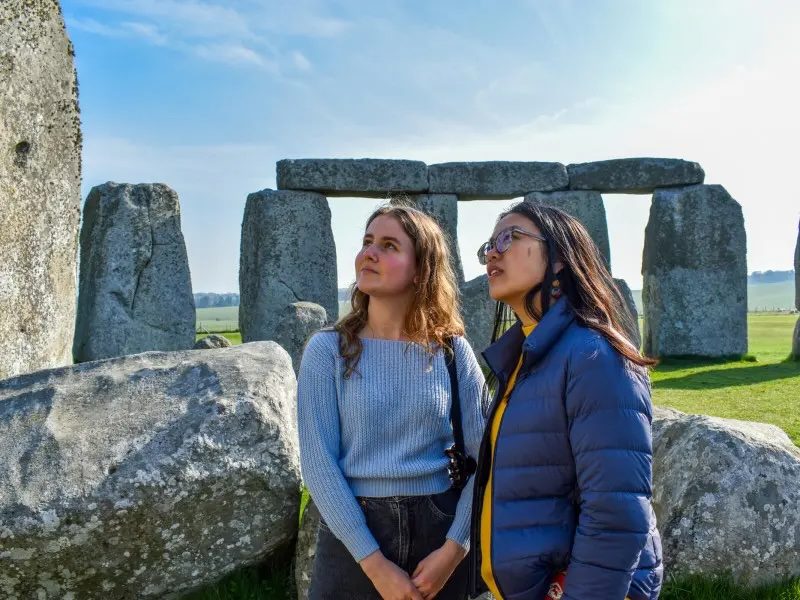
Who doesn’t love breaking out random facts about major world monuments during dinner parties? It’s one of the fastest ways to feel way cooler than everyone else in social settings. So, we wanted to help you out by sharing 3 of our favorite Stonehenge facts.
Stonehenge Might Be the Greatest Strength Workout In History
No one knows exactly why Stonehenge exists—was it a temple, a burial site, or just a giant ancient art project? But we do know that the stones were dragged from MILES away (we’re talking up to 150 miles), and no one knows how they did it without modern technology.
All we know is that none of the people responsible ever skipped leg day.
The Stones Are Almost 4 Times the Size of Humans
The stones vary in size, but the tallest one stands at approximately 22 feet. For context, the average dude is around 5’9″, so one of these rocks is nearly four times the height of your average human man.
Maybe we should all start measuring our height in “Stonehenge rocks”—though I’m sure some guys would still be rounding up on their Hinge profiles.
You Usually Don’t Get Access to the Inner Circle
Now, this one isn’t as much of a fact as it is an opportunity for some serious bragging rights. Most Stonehenge visitors are stuck admiring the stones from behind a rope, way off in the distance. But we offer two tours, VIP Stonehenge Inner Circle and Windsor Castle Tour and Exclusive Stonehenge Inner Circle and Windsor Guided Tour that get you right in the heart of the action—the Inner Circle.
As humans, we want to discover ancient secrets. And when you’re standing in the inner circle of Stonehenge, you’re literally in the middle of one of the greatest mysteries of all time.
Not ready to book a tour? Check out our Stonehenge Guide for more resources.
Mysterious Stonehenge Legends
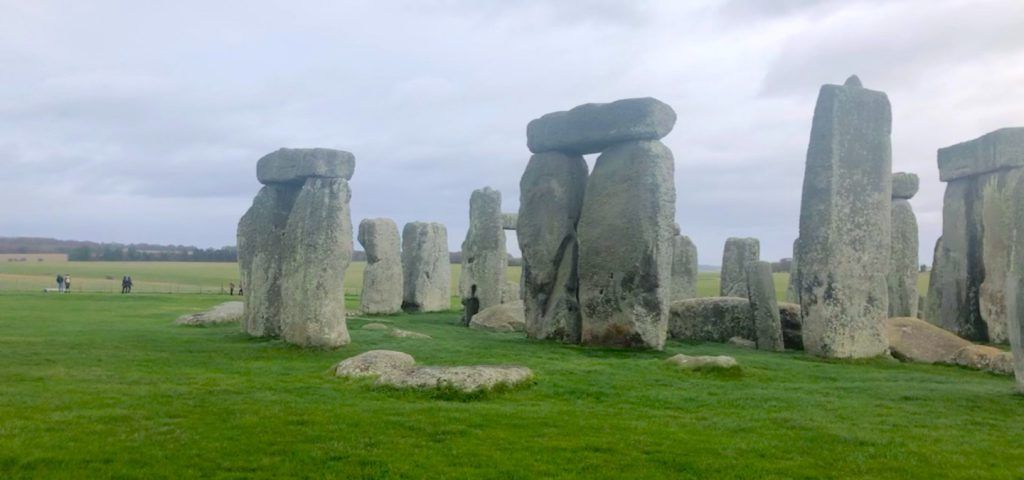
Stonehenge Makes Tourists Disappear
In August 1971, a group of hippies camped at Stonehenge, smoking pot and pondering life’s mysteries. That night, a storm rolled in, lightning struck, and the stones glowed blue. The blinding light caused bystanders to avert their eyes, but they heard screams from the campsite. When the storm cleared, only a smoldering tent and scattered journals remained—no sign of the campers.
Though unverified, this eerie urban legend endures, captivating listeners with its mystery and supernatural themes. It mirrors the intrigue surrounding Stonehenge itself: a colossal monument built over thousands of years by an unknown society. Despite some answers, we still don’t know who, how, or, most importantly, why it was built. The mystery persists, adding to Stonehenge’s timeless allure.
Merlin and Giants Built Stonehenge
In 1130 A.D., Geoffrey of Monmouth’s History of the Kings of Britain told a fantastical tale of Stonehenge’s origins. According to him, the stones, originally from Ireland, were stolen by Merlin and 15,000 men, with the help of an African giant, who transported them to the Salisbury Plain and erected Stonehenge.
The monument was supposedly commissioned by King Arthur to honor 460 Britons killed by Saxons.
Stonehenge was Built by Aliens
Erich von Däniken, a well-known proponent of ancient astronaut theories, believes that aliens played a role in the construction of Stonehenge. He suggests that the incredible precision and scale of the monument’s design could not have been achieved by primitive humans alone. According to von Däniken, extraterrestrial beings might have shared advanced knowledge or technology, enabling ancient people to move and erect the massive stones.
Stonehenge Secrets Revealed
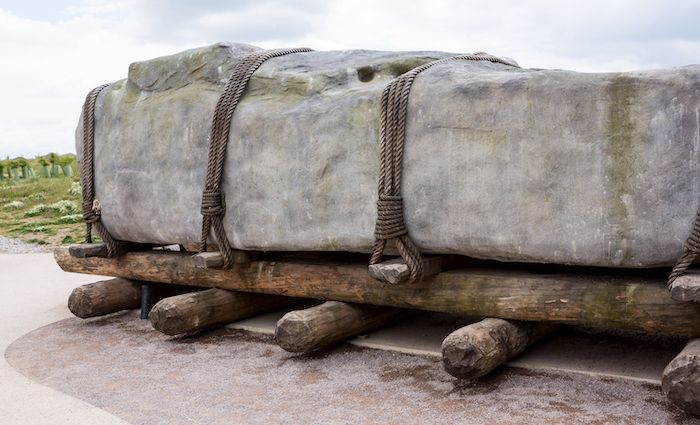
How Was Stonehenge Built?
Scientists love the question of how these stones got here. They also love the mystery of where exactly the stones came from. For years, scientists have been fascinated by these mysteries, constantly uncovering new details.
People actually tried to figure out how Stonehenge was built by transporting a bluestone from the Preseli Hills to Stonehenge using Stone Age methods. The team used modern cranes and salvage equipment to try to move the stone, but the project ultimately failed due to a lack of funds and, surprisingly, a shortage of volunteers. It turns out that people today weren’t exactly eager to drag a heavy stone across the country.
During the project, the bluestone, which had been placed on a barge for transport, broke free and sank into the water, adding another layer of complexity to the already difficult task. Eventually, the bluestone was salvaged and placed at the National Botanical Garden of Wales, where it still stands. But the question remains, if modern people with modern equipment couldn’t complete the task, how did those in 3000 B.C. manage to move all those stones?
Lucky for us, there have been some discoveries around the secrets of the creation of Stonehenge.
The Reappearance of the Stone Core
One of the most intriguing recent developments came when a core from one of the stones, taken in 1958 by Robert Phillips, resurfaced after 60 years. Phillips had borrowed (or some might say, stolen) the 3-foot-long cylindrical core, and now scientists have been able to study it.
Thanks to its well-preserved state, they compared its mineral makeup with other sarsen stones around the country and discovered an exact match with the stones of West Woods near Marlborough.
This revelation paints a vivid picture of Neolithic people traveling through West Woods, searching for the perfect sarsens—obviously, the taller and heavier, the better.
The Bluestones and Their Welsh Origins
Another exciting discovery has to do with the bluestones. Research has confirmed that they originate from the Preseli Hills along the Pembrokeshire coastline in Wales. But the mystery doesn’t end there.
Scientists now believe they’ve pinpointed a possible location for the original standing stones that may have once held the bluestones—Haun Mawn. Archaeologist Mike Parker Pearson recently published an article in Antiquity suggesting that the bluestones were part of a circle at Haun Mawn, and were later transported and re-erected at Stonehenge.
This discovery sheds new light on the journey these stones made and adds a fascinating chapter to the ongoing Stonehenge mystery.
Interesting Stonehenge Origin Theories
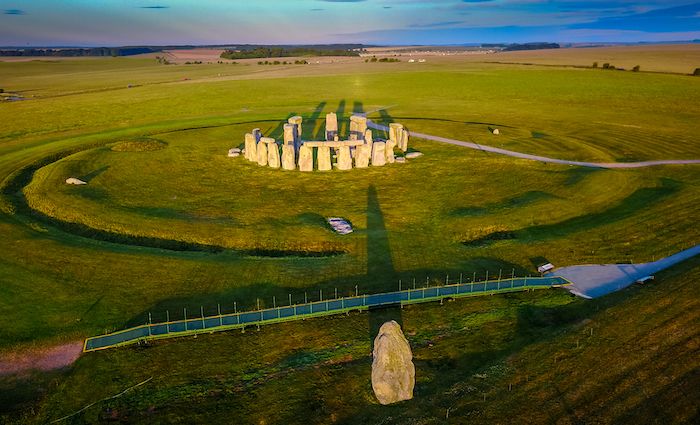
We’re all for a good conspiracy theory. And honestly, it would be pretty sweet if it turned out that aliens helped build Stonehenge. That said, we’re also big fans of science-backed theories, so although some of these next theories may be a little less exciting than Merlin and giants, they’re practical. And we like practical.
Theories on Why Stonehenge Was Built
Historians, archaeologists, and scientists agree that Stonehenge was highly significant to those who built it, though it was not a place of habitation, as evidenced by the lack of refuse. Its purpose remains speculative, as the Neolithic and Bronze Age people left no written records.
But the reality is that Stonehenge probably evolved over thousands of years, and its purpose likely shifted as societal changes took place in Britain. As communities became more stratified and wealth and connections expanded during the Bronze Age, the use of Stonehenge may have adapted.
One theory suggests Stonehenge was a place of pilgrimage, possibly linked to healing powers attributed to the bluestones. Another popular idea is that it served as a temple for sun worship, aligned with the summer solstice and lunar events.
In the 1960s, Gerald Hawkins used early computers to show that Stonehenge’s alignments were astrological, while others, like Alexander Thom, believed the site functioned as an observatory for tracking celestial events. However, these theories have been largely debunked, as the towering stones would block much of the night sky.
Was Stonehenge a Burial Ground?
Benjamin Ray proposes a theory that blends various ideas: Stonehenge was a way for Neolithic people to connect with the dead, reflecting their relationship with the stars, sun, and earth. He suggests the sun was seen as a sacred force, with the winter solstice symbolizing hope as the darkest night passed and longer days promised the return of warmth and life.
The earliest version of Stonehenge included pits with cremated remains, often symbolic portions, and a body once buried along the axis of the circle. Numerous gravesites are scattered around the site from this period.
This idea links to the theory that the Celtic Druids used Stonehenge for ceremonies, though they lived long after it was built. Modern Druids even gained the right to worship there, though the connection is anachronistic.
Historians like Benjamin Ray argue Stonehenge symbolized a link between the living and the dead, while religious scholar Mircea Eliade suggests the stones represented a continuity between life and death. Recent research also proposes the Welsh may have brought the bluestones, possibly carrying ancestral ties with them.
Top Hotels in London

The Marylebone Hotel ⭐⭐⭐⭐⭐
Near Soho · Large Pool · Room Service
This hotel stands out for its elegant bedding, convenient on-site restaurants, and attentive concierge service.

NoMad London ⭐⭐⭐⭐⭐
Amazing Communal Areas · Covent Garden Location
Old-world charm meets modern luxury at this 5-star hotel conviently located near Leicester Square.

The Gate Hotel ⭐⭐⭐⭐
Apartment Style · Fitness Center · Great Value
Modern, cozy, and affordable—just right for families or travelers who want everything within easy reach.
Why We Love Stonehenge
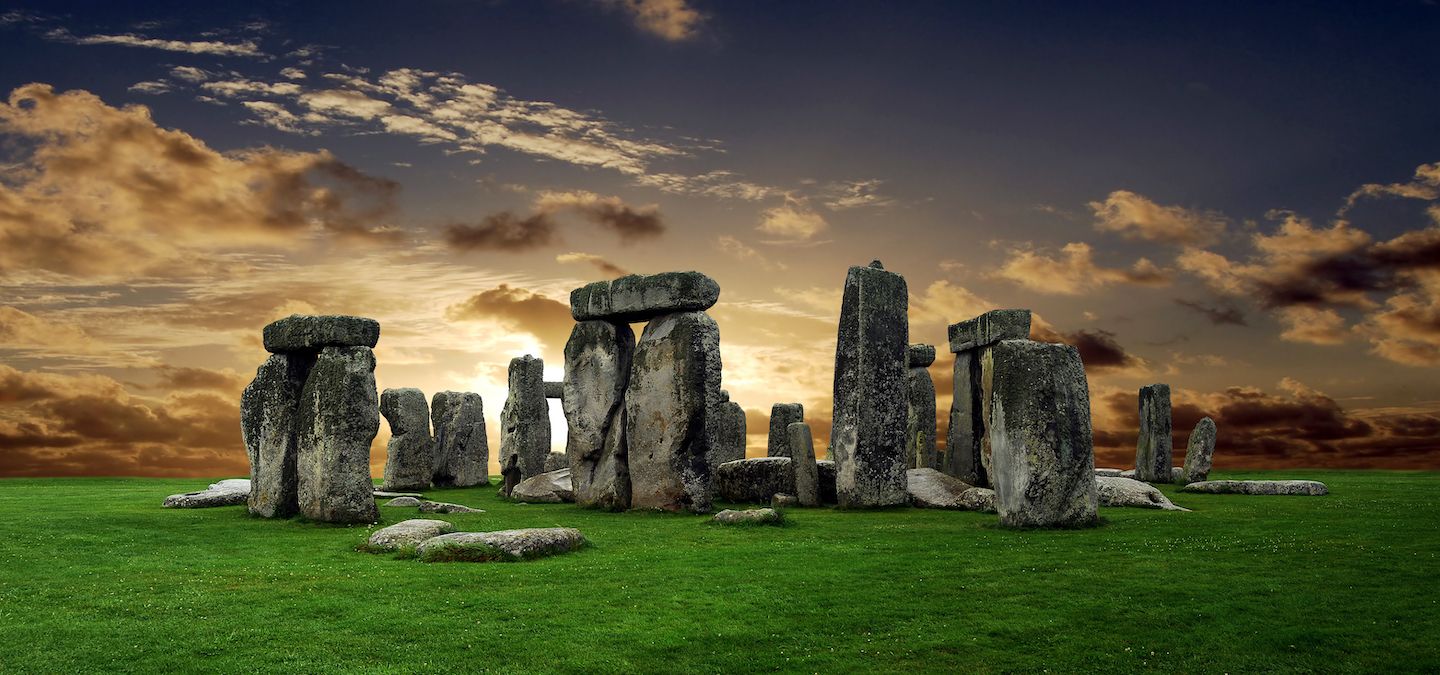
We love that the lack of written records allows Stonehenge to remain subjective and open to symbolism. It’s a monument that has inspired some of the greatest minds in literature, from Wordsworth to Emerson to Thomas Hardy, and even made its way into pop culture, like in the humorous Spinal Tap song.
Throughout history, people have tried to pin down who built it—whether it was the Britons, Romans, Mycenaeans, or Druids—but then there are the wilder theories, like giants or even aliens having a hand in its creation. While we’ve learned more about who might have built it, the real mysteries of why and how Stonehenge came to be are still very much unsolved.
That sense of wonder keeps us in awe of what our ancestors achieved and makes us wonder: what would it take for us today to accomplish something as monumental?
The Best Stonehenge Tours
Exclusive Stonehenge Inner Circle and Windsor Guided Tour
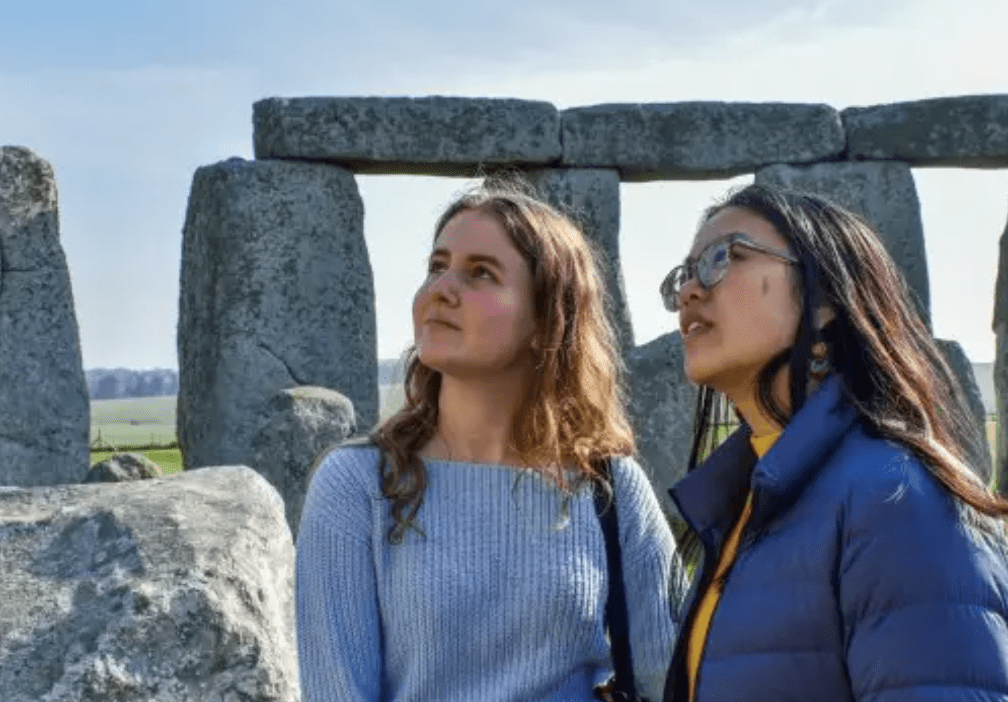
Access to Stonehenge’s inner circle is tightly controlled, with tickets available only during select hours. On our exclusive tour, we’ll take you directly from London to this iconic monument, offering a private guided walk among the ancient stones.
Then, immerse yourself in the charm of historic Windsor, where cobblestone streets, quaint tea rooms, and centuries of royal heritage await. Travel in comfort with premium transportation, ensuring a day filled with history, elegance, and unforgettable experiences.
Highlights:
- 10 hours
- Round-trip transportation by climate controlled vehicle
- Exclusive access to Stonehenge’s Inner Circle
- See the sunrise or sunset at Stonehenge
- Windsor town walking tour
- Windsor Castle (exterior)
Not ready to book a tour? Check out our Stonehenge Guide for more resources.
VIP Stonehenge Inner Circle and Windsor Castle Tour
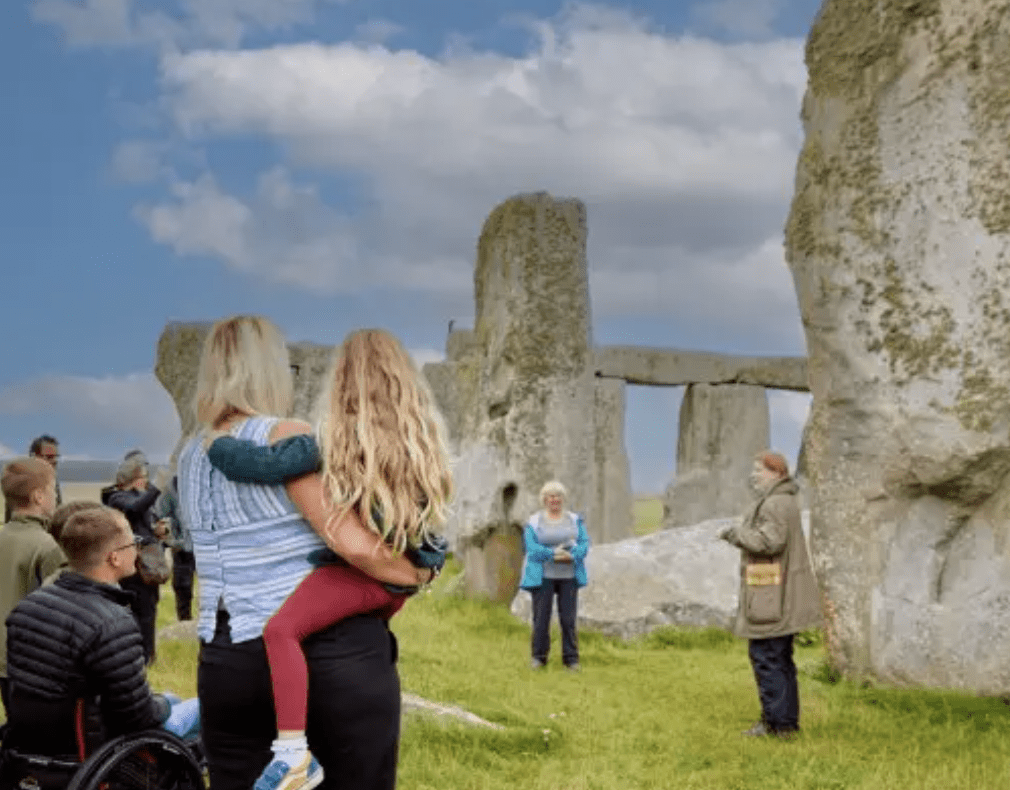
Access to Stonehenge’s inner circle is highly restricted, available only during special hours outside regular visiting times. On our exclusive access tour from London, you’ll have the rare opportunity to walk among the ancient stones and uncover their secrets with an expert guide.
Afterward, explore the grandeur of Windsor Castle, enjoying an audio-guided tour of its magnificent State Apartments, St. George’s Chapel, and centuries of royal history.
Highlights:
- 10 hours
- Exclusive Stonehenge Inner Circle access
- Sunrise or sunset at Stonehenge
- Round-trip transportation
- Windsor Castle tour with audio guide
- Expert English-speaking guide
Not ready to book a tour? Check out our Stonehenge Guide for more resources.
Windsor, Stonehenge, and Bath Day Trip from London
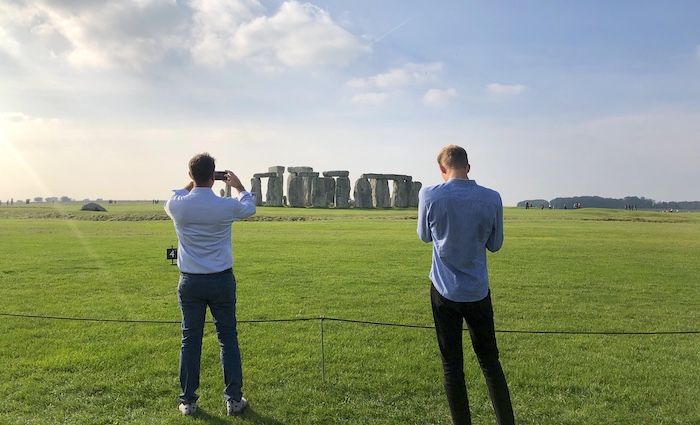
Your first stop out of London is Windsor Castle—the late Queen’s favorite residence. There are 13,000 acres here, and you’ll have tickets to enter the castle to explore the areas open to the public.
This is a self-guided tour as no tour guides are allowed inside. Not to worry! Your driver-guide will have prepped you with plenty of information about what you’ll see here and why it’s such a beloved castle for the royal family.
Then you’ll head to Stonehenge where you’ll get to walk the road leading to these famous ancient ruins.
Highlights:
- 11 hours
- Round-trip transportation from London
- Entry to Windsor Castle
- Entry to Stonehenge during the day
- Free time in Bath (explore or pre-book an activity)
Not ready to book a tour? Find out if Stonehenge tours are worth it.
